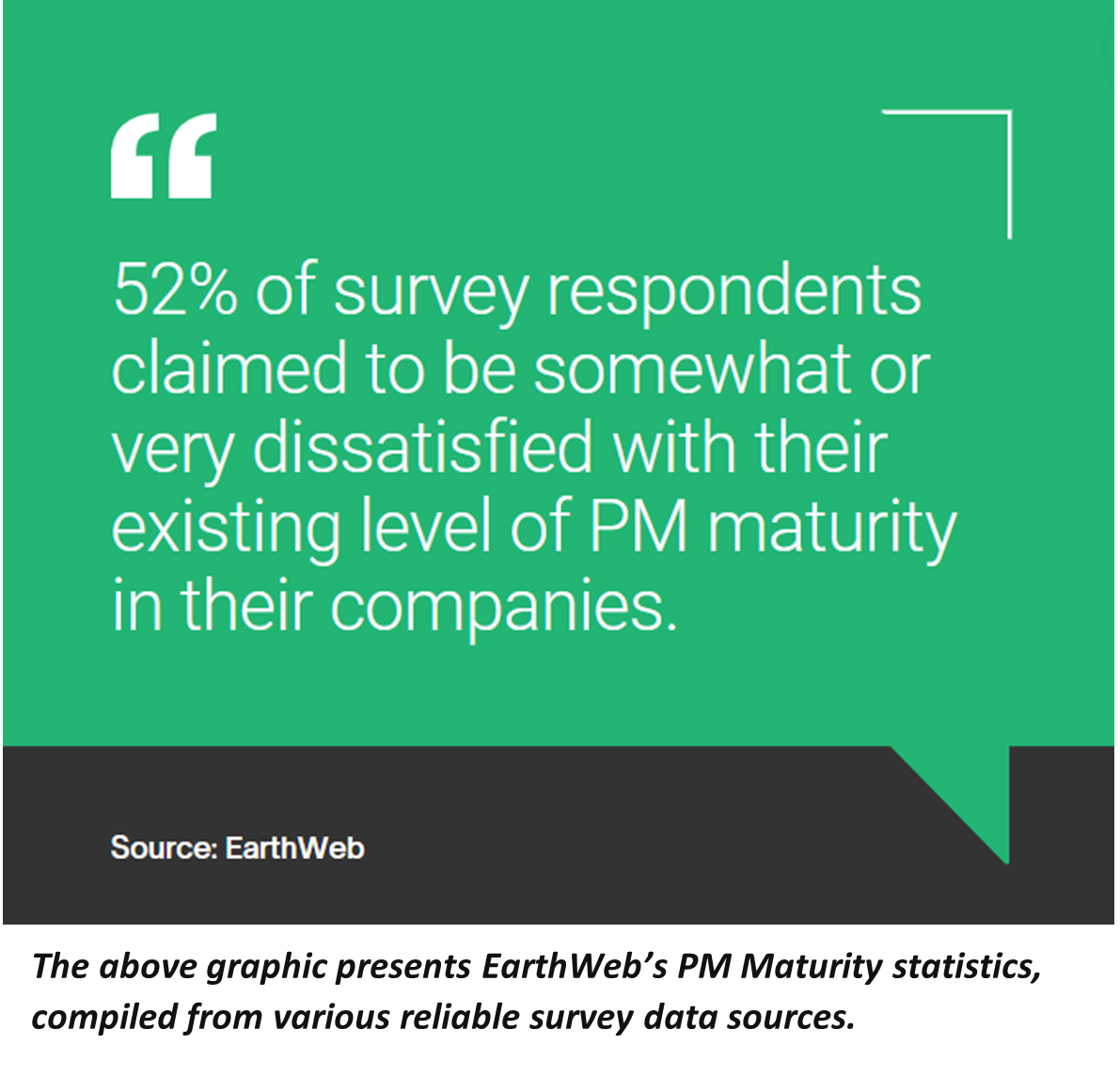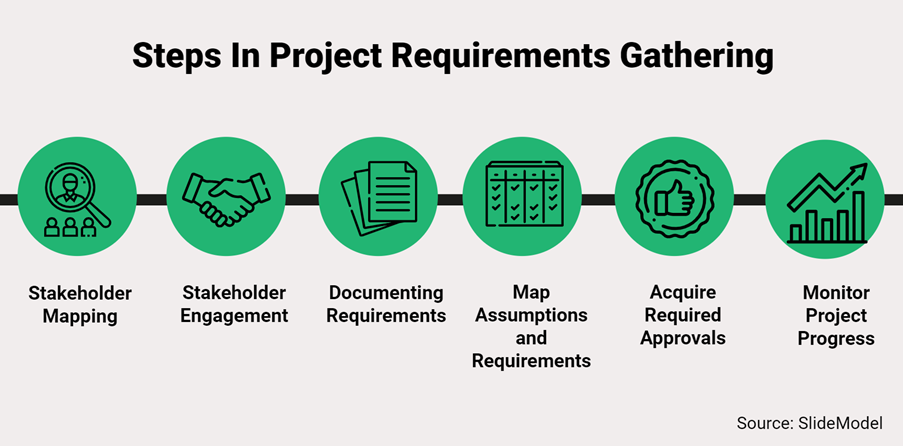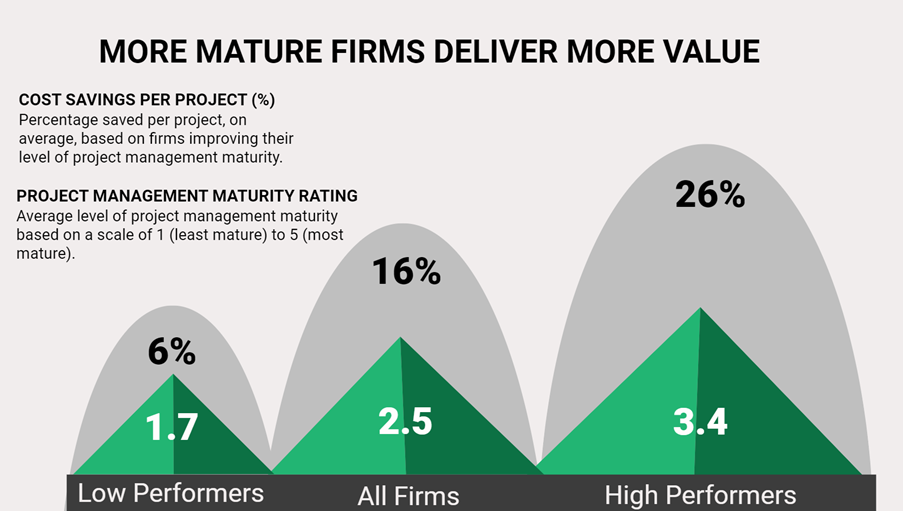
One misstep. Millions lost. Is your project sleepwalking toward disaster?
Early mistakes in project management can greatly haunt your business. Errors caught during maintenance can cost 200 times more than those snagged in the initial project requirements management phase, highlighting the importance of effective project management software from the start. With over 40% of the budget potentially draining due to poor requirements management, getting it right becomes critical.
So, let's ask the sharp questions -
How can we identify and gather project requirements that flex with technology's rapid evolution?
What early detection strategies minimize the sting of errors later?
These questions pave the way for navigating the intricate maze of project requirements management. As a project manager, business, or technology leader, understanding the correlation between project requirements, stakeholder needs, and business goals is essential. This article explores project requirements management, covering core elements, such as the project requirements management plan and requirements categorization, and their vital role in project success. The article also discusses the benefits of leveraging predictive project management solutions to manage project requirements well.
What is Project Requirements Management?
Project requirements management embodies a rigorous system for defining, analyzing, and governing the essential capabilities underpinning every project's success, facilitated by predictive project management software. Encapsulated within the project requirements management plan or Requirements Management Plan (RMP) is a comprehensive roadmap detailing the acquisition, analysis, documentation, and meticulous stewardship of project requirements. This plan encompasses the entire project lifecycle, from initial conceptualization to granular specification, ensuring all stakeholders navigate in unison.
Requirements are the bedrock of any project, representing the indispensable functionalities and attributes necessary to address user needs or solve specific problems. Their provenance is diverse, from legal imperatives, strategic business objectives, market dynamics, and even competitive intelligence.
Two fundamental categories guide the classification of project requirements:
- Functional Requirements - These constitute the core functionalities and features users require to accomplish their tasks, forming the operational fulcrum of any project, often managed using agile project management techniques.
- Non-Functional Requirements - These define the qualitative aspects of a project, encompassing crucial considerations like performance, security, usability, and reliability. Imagine a high-performance aircraft lacking basic flight controls – functionality alone, without performance safeguards, can be disastrous.
Both categories exert equal influence on project success. Even a single unmet non-functional requirement, be it inadequate security or subpar performance, can fail an otherwise functional project. Effective project requirements management cultivates a culture of meticulousness, ensuring alignment between project deliverables and the needs they aim to address. - Requirement vs. Scope - Requirements and scope, while related, are not identical. The PMBOK® Guide defines product scope as the features and functions that define a product, service, or result. The completion of the product scope is gauged against the product requirements. Requirements establish the scope of a project. Overstepping the stated requirements in the product scope is not advised, and falling short of user-stated requirements fails to meet user expectations.
Why is Project Requirements Management Important?
Modern technology solutions serve as strategic levers to boost productivity and output. However, even the most powerful technology can falter if built on shaky foundations. This is where project requirements management plays a crucial role, ensuring that technological investments genuinely fuel success.
productivity and output. However, even the most powerful technology can falter if built on shaky foundations. This is where project requirements management plays a crucial role, ensuring that technological investments genuinely fuel success.
Consider requirements as the blueprint for your project, necessitating robust project planning tools to ensure accuracy and efficiency. Skimping on that blueprint can lead to potential costly rework and missed deadlines. Uncontrolled scope creep, often stemming from uncertain requirements, leads to ballooning costs and delayed deliveries.
IBM and NASA have shared some important findings from their experience with complex projects. IBM’s survey highlights that controlling the project scope and ensuring high-quality requirements is crucial for project success. On the other hand, NASA discovered that projects that didn’t invest enough in requirements had cost overruns ranging from 80% to 200%. However, projects that allocated 8-14% of their resources to requirements had a smoother execution with cost overruns under 60%.
The message is unequivocal - Treating requirements as an afterthought is a recipe for disaster. Early intervention is key, as mitigating obstacles born from bad requirements later in the project is risky and expensive.
Imagine delivering a project on time and within budget, only to find the features are like unwanted holiday gifts – gathering dust in the corner. Research indicates this isn't rare, with 45% of IT features ending up unused.
Therefore, prioritizing a robust project requirements management approach and harnessing advanced predictive project management solutions goes beyond avoiding cost blowouts and delays; it ensures your project delivers features that genuinely matter. It's akin to building a lean, efficient machine that generates value, not just consumes resources.
Who Creates a Project Requirements Management Plan?
The project requirements management plan typically falls under the stewardship of the project manager, with significant inputs from the project office. The project office ensures that all processes, tools, and techniques used in project requirements management are standardized and optimized for success. However, effective execution thrives on collaboration. Input from the requirements gathering and verification team ensures a comprehensive and accurate representation of project needs.
The scope expands further. To guarantee alignment and buy-in, actively seek stakeholder contributions, including valuable insights from customers and end users. Their perspectives become the compass guiding the project toward success.
Beyond personnel, the project requirements management plan requires strategic solution selection. Define which solutions and techniques will facilitate efficient requirements capture, analysis, and communication. Finally, transparent and rigorous verification and approval processes must be established, ensuring all requirements meet defined criteria. Project requirements management becomes a powerful cornerstone of project success by fostering collaboration, identifying the right solutions, and establishing clear processes.

The illustration below highlights the important steps for project requirements gathering.
Important Elements of Project Requirements Management
Building a project requirements management plan with purpose is essential for any successful initiative, informing product research, design, and implementation. These essential elements define a project's ‘what’ and ‘why’ of a project, ensuring it aligns with operational priorities and client needs. Here's a glimpse into the core components:
- Unambiguous Goals - Precise and detailed specifications are paramount. They set the project’s compass, clearly outlining its goals and leaving no room for ambiguity.
- Thorough Evaluation - User Acceptance Testing (UAT) and other evaluation methods act as litmus tests for requirements’ effectiveness. By actively seeking feedback, organizations ensure solutions truly meet actual needs.
- Shared Comprehension - Requirements must be written in clear, concise language and accessible to all project stakeholders. Shared comprehension empowers teams to execute with confidence.
- Authentic User Portrayal - Effective requirements accurately describe user needs and potential pain points. Organizations can deliver solutions that resonate by understanding the specific challenges people face.
- Feasibility Assessment - Comprehensive research is crucial. Organizations must assess proposed requirements' financial and technical feasibility, ensuring they contribute meaningfully to achieving project objectives.
By meticulously crafting and validating these fundamental components, organizations lay the foundation for projects that function flawlessly and deliver genuine value.
The illustration below is based on a survey by PM Solutions taken by 293 high-level project management personnel from organizations of all sizes in various industries, including manufacturing, healthcare, technical finance, and government.

Source: PM Solutions
Benefits of Project Requirements Management
Impeccable product delivery hinges on a meticulous project requirements management plan. Integrating predictive project management solutions can transform how teams anticipate challenges, adapt to changes, and ensure that every project phase aligns with overarching business goals. This rigorous discipline fosters:
- Superior Quality—By meticulously documenting and tracking changes, organizations minimize errors and ensure solutions align with precise specifications.
- Predictable Delivery - Clear communication and shared understanding guide project flow, leading to on-time completion and stakeholder satisfaction.
- Cost Optimization - Proactive management prevents costly rework and scope creep, maximizing resource efficiency and minimizing financial burdens.
- Precise Scope Control - Defined requirements set clear boundaries, eliminating ambiguity and ensuring projects stay on track to deliver intended outcomes.
- Enhanced Consistency - Standardized processes and documentation lead to uniform deliverables, minimizing inconsistencies and improving overall quality.
- Seamless Collaboration - Shared knowledge and transparent communication empower teams to work cohesively, fostering greater efficiency and agility.
Beyond these, effective requirements management lays the foundation for:
- Reduced Risk - Addressing potential issues early mitigates project vulnerability and promotes resilience.
- Improved Stakeholder Buy-In - Clear communication fosters trust and engagement, leading to a more unified project vision.
- Enhanced Adaptability - Robust processes enable projects to pivot effectively in response to changing needs.
In essence, meticulous requirements management transforms projects from precarious endeavors into precisely orchestrated successes.
7 Tips for Project Requirements Management Plan
Effective project requirements management is the cornerstone of successful projects. However, to enhance this capability, you must leverage the power of predictive project management solutions to automate tasks, identify potential issues before they arise, and optimize project delivery. Here are the steps you must focus on for project requirements management -
- Identify Stakeholders - Pinpoint the individuals and groups whose input and buy-in are crucial. Investors, customers, and key project personnel top the list.
- Gather Insights - Employ diverse methods like interviews, questionnaires, prototypes, and context diagrams to extract user needs and stakeholder expectations.
- Prioritize and Align - Evaluate collected requirements against business objectives and prioritize based on their strategic relevance and impact. Focus on those that directly support the organization's mission.
- Execute and Monitor - Craft a clear plan, assign roles, and initiate work aligned with prioritized requirements. Share documentation for stakeholder approval and actively track progress, incorporating any emergent requirements as needed.
Pro Tips for Project Requirement Management:
- Leverage collaborative and predictive project management solutions to efficiently store, share, and manage requirements.
- Establish a standardized process for handling change requests to ensure agility without compromising control.
- Conduct risk assessments and proactively develop mitigation strategies to address potential challenges.
By mastering these steps and employing the pro tips, organizations can transform requirements into a powerful roadmap, guiding projects toward impactful success.
Conclusion
In summary, adept project requirements management is pivotal in avoiding potential pitfalls in project management. Recognizing the impact of early missteps, prioritizing clear requirements, and fostering collaboration are crucial elements in this intricate process. The interplay between project aspirations, stakeholder needs, and business goals necessitates a meticulous approach. With fool-proof project requirements gathering, you can ensure your project steers in the right direction from initiation.
However, traditional requirements management methods can be time-consuming and prone to human error. Consider leveraging predictive project management solutions to build a robust project requirements management strategy. TrueProject, a KPI-based predictive project management solution, shines a light on this complexity, empowering you to make informed decisions confidently. Its capabilities go beyond task management; it provides unparalleled clarity into the cascading effects of change, potential impact analysis, and even proactive risk prediction, improving project health and performance. TrueProject uses advanced warning, predictive intelligence, and AI to identify potential project issues before they become critical, ensuring your projects stay on track and within budget. TrueProject isn't just an upgrade; it's a paradigm shift in requirements management that offers a comprehensive solution to untangle the complexities and ensure project success.
More information on TrueProject at trueprojectinsight.com

About the Author:
Nisha Antony is an accomplished Senior Marketing Communications Specialist at TrueProject, a leader in predictive intelligence. With over 16 years of experience, she has worked as a Senior Analyst at Xchanging, a UK consulting firm, and as an Internal Communications Manager on a major cloud project at TE Connectivity. She is an insightful storyteller who creates engaging content on AI, machine learning, analytics, governance, project management, cloud platforms, workforce optimization, and leadership.
Endnotes
- Tim Barenscheer. “Requirements Management: The Key to Project Success.” Teamly: (n.d.). https://www.teamly.com/blog/requirements-management-planning/
- Indeed Editorial Team. “Requirements Management: Definition, Details, Steps And Tips.” Indeed: Sep 6, 2023. https://in.indeed.com/career-advice/career-management/requirements-management
- SlideModel Team. “Requirements Gathering in Project Management: A Quick Guide.” SlideModel: Mar 16, 2022. https://slidemodel.com/requirements-gathering-project-management/
- Jason Wise. “PROJECT MANAGEMENT STATISTICS 2024: SUCCESS & FAILURE RATES.” EarthWeb: Jul 14, 2023. https://earthweb.com/project-management-statistics/
- PM Solutions Team. “Benchmark Study Shows Higher Project Management Maturity = Stronger Performance.” PM Solutions: 2014. https://www.pmsolutions.com/news/view/project-management-maturity-research
- Kumar, Victoria S. “Effective requirements management.” Project Management Institute: Oct 2006. https://www.pmi.org/learning/library/effective-requirements-management-project-success-8181





